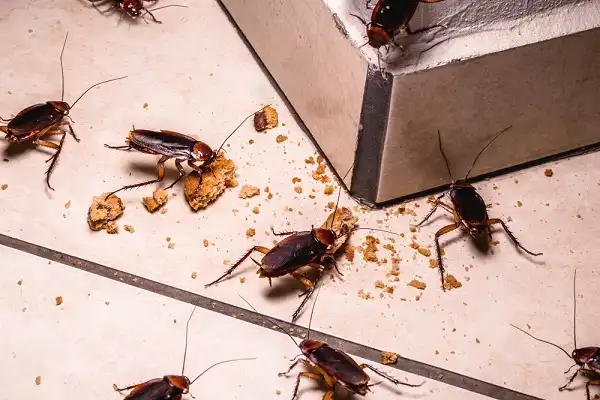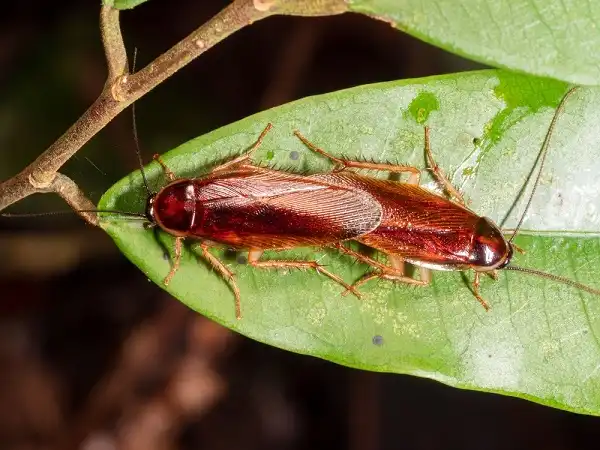Cockroaches have been around for over 300 million years, making them one of the most successful insects on Earth. Despite their reputation as dirty pests, cockroaches are actually very clean creatures. In fact, they are so clean that they have been used in medical research to help fight bacteria and diseases. Whether you love them or hate them, there is no denying that cockroaches are amazing creatures. So let’s take a closer look at these fascinating insects and learn more about what makes them tick.

Cockroach Description
Cockroaches are fascinating insects with a long and successful history on Earth. Their bodies are divided into three segments – the head, thorax, and abdomen – which are surrounded by an exoskeleton composed of hardened chitin plates that protect them from predators. They have powerful mandibles for chewing and spines on their legs for gripping surfaces, allowing them to climb walls, furniture, and other objects. They vary in color too, ranging from browns, blacks, and reds to even bright greens or blues. They also play an important role in breaking down waste materials in the environment through natural decomposition processes. Despite their reputation as pests, cockroaches actually have a lot of benefits for humans too. For instance, some species are used to help detect certain types of explosives in airports or to study antibiotic resistance in medical research laboratories. Also, they can be kept as pets if the right conditions are met!
Cockroach Habitat
Cockroaches are found in a variety of habitats around the world, from tropical rainforests to cities and suburban homes. They can even survive in extreme environments such as deserts or high altitudes. Generally, cockroaches prefer warm and humid places with plenty of food, water, and shelter. This could include dark cracks and crevices, under logs or rocks, inside rotten wood or dead leaves, or beneath pieces of furniture or appliances. Cockroaches are also known to be great survivors.
Cockroaches have been observed living without food for up to one month depending on the species; this is because they can go into dormancy when necessary in order to conserve energy reserves. In addition to surviving in a wide range of different climates and environments, cockroaches are also able to thrive under various conditions of light exposure. While most species tend to prefer darkness, certain species have evolved an adaptation that allows them to tolerate light better – this is why some cockroach species are commonly seen scuttling around during the daytime!
Cockroach Diet
Cockroaches have a varied diet that includes almost any type of organic material, be it living or decaying. They are omnivorous, meaning they eat both plant and animal-based foods, as well as scavenge for food in the environment. This could include sweets, meats, fruits, vegetables, and grains; while in wilder areas they will feed on insects and decaying matter. Cockroaches rely mainly on their sense of smell to find food sources, particularly pheromones which attract them to suitable food sources.
They also have incredibly strong mandibles which enable them to break through tougher materials such as wood or plastic containers. Moreover, cockroaches can go into dormancy when necessary in order to conserve energy reserves which means they can survive without food for up to one month depending on the species. In addition to food sources found naturally in the environment such as fruit or dead animals, cockroaches are also able to thrive on human-made foods – this is why they are so common in households! Cockroaches can be found feasting on leftovers from dinner plates or snacks left out overnight; this is why it’s important to always store food away safely and keep kitchens clean from crumbs and spills.

Cockroach Size
Cockroaches come in a variety of shapes and sizes, although the most common species tend to average around 1.2 inches in length. While some species may be larger than this, such as the tropical giant cockroach which can grow up to 4 inches long, most cockroaches tend to stay fairly small. However, the size of an individual cockroach can depend on its diet and environment. A cockroach that has access to more food sources will usually grow larger than one with limited resources; this is why some specimens can reach lengths of up to 4 inches long!
Similarly, the temperature of their environment also plays a role in their size – cockroaches kept at higher temperatures tend to develop faster and grow bigger than those kept at cooler temperatures. It’s also important to note that while adult sizes may vary slightly between different species, all young cockroaches are almost identical in size regardless of the species they belong to – this is because they begin life as nymphs before they mature into adults. Nymphs are born very small (around 0.04 inches) but they quickly increase in size by molting their exoskeleton several times until they eventually reach adulthood.
Cockroach Lifespan
The lifespan of a cockroach can vary drastically depending on the species, habitat, and environment in which it lives. Most commonly found species typically have an average lifespan of about one year, although some exceptions have been documented. For instance, the giant Madagascar hissing cockroach (Gromphadorhina portentosa) can live up to five years or even longer! In general, the life expectancy of a cockroach is highly dependent on its environment – this means that it may live longer in areas with plenty of food and warm temperatures while its lifespans may be significantly shorter in cold or dry conditions.
Similarly, the availability of shelter and nesting sites can also play a role in determining how long a cockroach will live since these provide protection from predators and harsh weather conditions. Finally, it’s worth noting that although most roaches only live for one year or less, there is evidence suggesting that some species may be able to reach much longer lifespans given ideal conditions. For example, studies conducted among German cockroaches (Blattella germanica) have revealed that under laboratory settings where temperature and food supply were optimal, individuals were able to survive up to three years!

Cockroach Behavior
Cockroach behavior is primarily driven by basic instincts, most of which are focused on avoiding predators and seeking food. In order to do this, cockroaches use their senses of smell, taste, touch, sound, and sight to detect potential threats or sources of nourishment. They are also able to navigate their environment using a combination of chemical trails, vibrations, and air currents. Cockroaches display a wide array of behaviors in response to different stimuli and conditions. When faced with danger they often flee quickly or hide in dark places; some species may even play dead if unable to escape an aggressor. At times when food is scarce, cockroaches can become more aggressive as they compete for what little resources remain.
In the presence of other roaches, they will tend to congregate in large numbers and create complex social hierarchies. In addition to the behaviors mentioned above, cockroaches can also exhibit more complex actions such as mating rituals and courtship displays. Male cockroaches will typically try to attract potential mates with a variety of behaviors including drumming on surfaces with their antennae or vibrating them against objects in the environment – this allows them to produce distinct sounds that act as signals for potential partners. On the other hand, female cockroaches can also partake in courtship activities such as choosing preferred males based on their size or coloration; some species will even perform mating dances with one another!
Cockroach Speed
Cockroaches are known to be one of the fastest-moving insects in the world. They can move at speeds between 4 and 5 inches per second and can even accelerate up to 50 body lengths per second! This is made possible by their ability to quickly adjust their bodies to changes in terrain, allowing them to maneuver through tight spaces and around obstacles with ease. In addition to running, cockroaches have also been observed performing complex aerial maneuvers such as flying, gliding, and parachuting. Certain species like the American cockroach (Periplaneta Americana) can actually take off from a standing position; they use their wings to propel themselves forward through the air at speeds upwards of 3 miles per hour! Some roaches such as the Madagascar hissing cockroach (Gromphadorhina portentosa) are even capable of swimming and can stay underwater for up to 30 minutes.
Overall, cockroaches have an amazing ability to change their speed, direction, and maneuverability depending on their environment; this is what allows them to be successful in both urban and non-urban habitats all around the world! Their impressive agility and speed also make them difficult prey for predators like birds or small mammals which further contributes to their longstanding success as one of the most abundant insects in existence.

Cockroach Hunting
Cockroaches are omnivorous and will feed on both plant and animal matter, depending on the availability of these food sources. They have been known to scavenge for their meals in areas such as compost piles, garbage bins, or even spilled human food. On top of this, cockroaches are also skilled hunters; they use their antennae to detect the presence of potential prey and pounce upon it with lightning speed before consuming it whole! Certain species such as the Turkestan roach (Blatta lateralis) are actually nocturnal predators and will actively hunt down smaller insects in order to feed. This behavior has been observed more recently in urban environments where roaches have become accustomed to living close to humans
Conclusion
In conclusion, the fascinating behavior of cockroaches is a testament to their success as one of the oldest living insects known to humans. From running and flying at impressive speeds, engaging in elaborate mating rituals and even hunting down prey – cockroaches have successfully adapted to a variety of environments across the globe. No matter where they may be found, it is easy to see why these amazing creatures continue to thrive!
Frequently Asked Question

